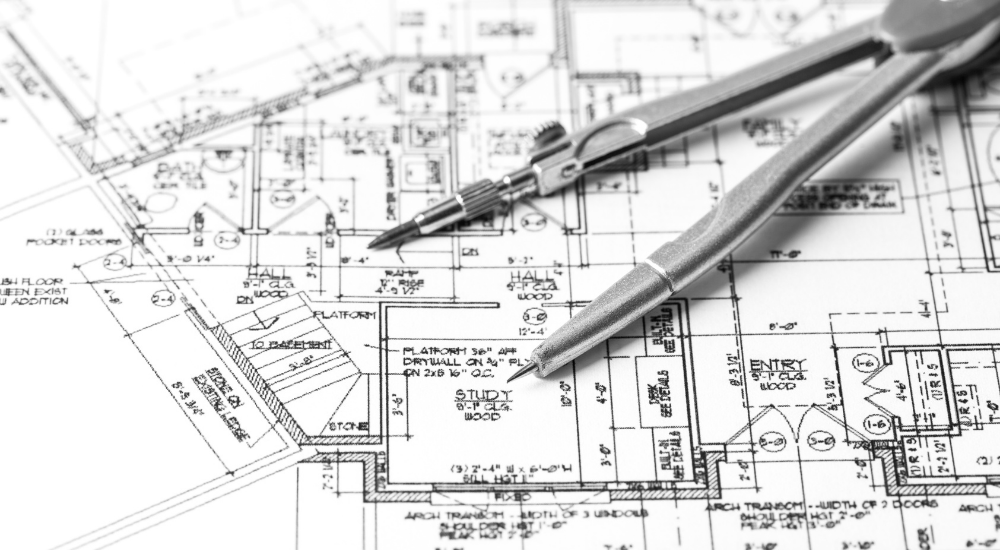Architect Recommended Tools for 3D Modeling
Architect Recommended Tools for 3D Modeling
Blog Article
Recognizing the Diverse Profession Paths Available for Aspiring Architect
As a hopeful Architect, you have a globe of career paths awaiting you. Each path offers special challenges and chances to use your creativity and technological know-how. Whether you're attracted to traditional design or the nuances of lasting design, there's a particular niche that aligns with your rate of interests. Recognizing these diverse alternatives can shape your expert trip, but which direction will you pick to discover first?
Traditional Style: Creating Buildings and Frameworks
Conventional design concentrates on creating buildings and structures that blend performance with aesthetic appeal. Your layouts can mirror social heritage, showcasing neighborhood practices while meeting modern demands.
You'll develop abilities in composing, model-making, and website analysis, enabling you to imagine and communicate your concepts properly. Involving with clients, you'll need to understand their vision and convert it right into possible designs.
Furthermore, constructing codes and sustainability methods are essential in your work, guaranteeing your structures are eco pleasant and risk-free. As you grow in your occupation, you'll discover opportunities in domestic, business, and even restoration tasks, each offering special difficulties. Embracing typical design leads the way for a fulfilling occupation that admires the past while forming the future.
Urban Preparation: Shaping Areas and Public Spaces
As a hopeful Architect, you can play an important role as a metropolitan planner, changing how areas work and interact. By utilizing community involvement strategies, you'll ensure that residents have a voice in shaping their setting. Plus, incorporating sustainable style concepts will assist create spaces that not just fulfill today's requirements yet also safeguard the future.
Duty of Urban Planners
While lots of might consider engineers as the sole enthusiasts behind structures, urban coordinators play a vital duty fit the wider landscape of areas and public spaces. They evaluate land use, zoning regulations, and area needs to create sustainable atmospheres that improve lifestyle. By teaming up with various stakeholders, you'll help develop parks, transportation systems, and residential areas that promote social interaction and accessibility. Urban planners likewise concentrate on ecological factors to consider, making certain that growths integrate eco-friendly areas and support biodiversity. Your experience in spatial layout and community dynamics allows you to envision future development while maintaining cultural heritage. In this important function, you'll directly influence how individuals experience their surroundings, making every task an opportunity for favorable change.
Area Interaction Strategies
Reliable community engagement methods are vital for urban coordinators to ensure that the voices of citizens are listened to and valued in the planning process. To foster significant dialogue, you need to prioritize open forums and workshops where community members can express their ideas and worries. By proactively integrating and paying attention feedback, you'll create spaces that reflect the community's needs, eventually leading to more successful and sustainable metropolitan atmospheres.
Sustainable Design Concepts
When designing metropolitan spaces, incorporating lasting layout principles is vital for developing atmospheres that flourish both ecologically and socially. You should start by focusing on power performance, making use of materials that minimize waste and promote recycling. Take into consideration incorporating eco-friendly spaces, like gardens and parks, to boost biodiversity and enhance air quality. Advertising walkability and public transport can reduce reliance on cars, cultivating a much healthier neighborhood.
Designing with water conservation in mind is also vital-- think concerning rain yards and absorptive surfaces to handle stormwater. Entailing neighborhood participants during the planning procedure guarantees that the rooms you develop satisfy their needs and motivate social communication. By embracing these principles, you'll contribute to lively, sustainable metropolitan landscapes that profit every person.

Landscape Architecture: Developing Lasting Outdoor Settings
As you check out landscape design, you'll uncover crucial design principles that develop stunning and functional outside spaces. Lasting practices play a vital function in making certain these settings flourish while decreasing environmental influence. Plus, you'll discover a selection of occupation opportunities that enable you to make an actual difference in just how people engage with nature.
Layout Principles in Landscape
Recognizing layout principles in landscape design is essential for creating lasting exterior atmospheres that integrate with nature. You'll need to consider aspects like range, percentage, and balance to guarantee your styles really feel natural and welcoming. Including native plants not only improves biodiversity but likewise decreases water use, making your landscape resistant. Think of the circulation of area and how individuals engage with it; paths and seating areas need to invite expedition and relaxation. In addition, pay focus to seasonal changes, developing with products that enhance the surroundings year-round (Architect). By prioritizing sustainability and visual appeals, you can produce exterior rooms that improve the area and promote wellness. Accepting these principles will set a strong foundation for your occupation in landscape design.
Lasting Practices Summary
Sustainable practices in landscape style not just focus on appearances yet likewise prioritize eco-friendly health and wellness and source conservation. By integrating indigenous plants, you enhance biodiversity and reduce the requirement for chemical fertilizers and chemicals. Applying effective irrigation systems assists save water and reduces runoff, shielding close-by ecosystems. You can design spaces that advertise soil wellness, such as utilizing natural products and practicing permaculture concepts. Additionally, including eco-friendly infrastructure, like rain yards and porous pavements, help in stormwater monitoring and minimizes city warm. You add to a healthier world and give areas that promote community connection when you develop outdoor atmospheres with sustainability in mind. Eventually, these practices ensure your layouts profit both people and the atmosphere for many years ahead.
Occupation Opportunities Expedition
With a solid structure in sustainable methods, landscape style supplies a selection of job courses that enable you to make a purposeful impact on the environment. You could work as a landscape designer, developing visually pleasing and practical outside areas, or specialize in ecological reconstruction, helping to revitalize broken ecological communities. Urban organizers commonly team up with landscape engineers to develop eco-friendly areas in urban setups, improving city livability. If you're passionate concerning education, consider ending up being a landscape design teacher, inspiring future generations. In addition, you may deal with nonprofits concentrated on ecological sustainability or participate in research to introduce new practices. Each path not only forms attractive settings however also promotes a healthier earth for future generations.
Lasting Design: Concentrating on Eco-Friendly Practices
As you discover your profession in style, embracing eco-friendly methods can establish you apart in an affordable field. Sustainable layout focuses on producing structures that reduce ecological impact while improving owner wellness. By including sustainable products, energy-efficient systems, and sustainable building methods, you'll add to a greener future.
Begin by gaining understanding of environment-friendly certifications like LEED or BREEAM, which can boost your qualifications. Consider just how all-natural light, ventilation, and thermal efficiency can enhance style. Work together with engineers and ecological professionals to introduce solutions that minimize waste and save sources.
Do not neglect the importance of community involvement-- interesting neighborhood stakeholders can motivate layouts that integrate with the environment. As clients progressively focus on sustainability, your competence in eco-friendly practices will certainly not only attract projects but also satisfy your passion for accountable design. Accept this important element of the occupation, and enjoy your job prosper.
Historical Conservation: Shielding and Recovering Social Heritage
While you start on your building trip, think about the vital function of historic conservation in preserving our cultural heritage. This area concentrates on the security and remediation of considerable buildings, sites, and frameworks that inform the stories of our past. By participating in historical conservation, you'll assist safeguard the building tradition that shapes area identification.
As a historical preservation Architect, you'll evaluate historical relevance and evaluate the problem of structures. You'll function carefully with conservationists and chroniclers to assure authentic remediation techniques are utilized. This job path permits you to blend creative thinking with research study, allowing you to develop remedies that appreciate initial materials find out here now and workmanship.
Your job not only adds to sustainability by recycling existing buildings yet likewise cultivates a feeling of pride within neighborhoods. Welcoming this course will certainly assist you become a guardian of background, maintaining the tales and looks that enrich our lives.
Interior Style: Enhancing Indoor Spaces
Historical conservation and interior design both share a dedication to boosting the built atmosphere, however they focus on various aspects. While historic preservation highlights preserving a framework's cultural and historic value, indoor design absolutely nos in on enhancing interior areas for capability and visual appeals.
As an aspiring Architect, you'll discover that interior design allows you to mix creative thinking with technological skills. You'll design rooms that not only look excellent yet likewise advertise convenience and efficiency. This field includes recognizing exactly how light, color, and products connect within a room, affecting mood and usability.
You'll service different projects, from residential homes to commercial workplaces, ensuring that each setting satisfies the demands of its residents. By prioritizing individual experience, you can change home interiors into practical and inspiring rooms, making a significant influence on just how individuals connect with their environments. Embrace the chance to boost indoor atmospheres and shape the way individuals live and function.
Industrial Design: Combining Performance With Looks
Industrial design plays a necessary role in producing products that flawlessly blend appearances with functionality, making sure that what you make use of day-to-day is not just aesthetically appealing yet likewise practical. As an aspiring Architect, you could immerse yourself in this area, focusing on designing every little thing from furnishings to consumer electronics. Your job includes recognizing customer needs, materials, and producing processes, allowing you to create cutting-edge services that boost day-to-day experiences.
In commercial style, you'll frequently team up with marketers, engineers, and makers, making sure that your layouts are not only beautiful however additionally possible. This career course uses a vibrant setting where creative thinking satisfies practicality, making it a fulfilling option for engineers interested in shaping the items of tomorrow.
Regularly Asked Inquiries
What Educational Certifications Do I Need to Come To Be a Designer?
To come to be an architect, you'll require a specialist degree in style, generally a Bachelor's or Master's. In addition, you'll have to finish a teaching fellowship and pass the Architect Enrollment Evaluation to practice lawfully.
Are There Qualification Needs for Various Architectural Career Paths?
Yes, there're qualification requirements for numerous building paths. Architect. You'll require to pass examinations, complete teaching fellowships, and in some cases pursue specialized training, depending upon your selected focus, like landscape design, city design, or historic preservation
What Software Skills Are Important for Architects Today?

Just How Can I Gain Practical Experience While Studying Style?
You can acquire useful experience by interning at architectural companies, taking part in layout competitors, offering for community jobs, or working together with classmates on real-world assignments. These opportunities enhance your abilities and construct important links in the market.
What Work Opportunities Exist Outdoors Conventional Design Firms?
You can check out different work possibilities outside conventional architecture companies, like metropolitan preparation, interior design, landscape style, building and construction administration, actual estate development, or perhaps duties in sustainability consulting. Each deals special obstacles and rewards.
Whether you're drawn to standard design or the subtleties of sustainable style, there's a particular niche that aligns with your interests.When creating city areas, including lasting design principles is vital for developing atmospheres that thrive both ecologically and socially.As you explore landscape style, you'll discover vital style concepts that develop functional and gorgeous outside spaces.Comprehending style principles in landscape architecture is vital for producing sustainable outdoor atmospheres that balance with nature.In industrial design, you'll frequently work together with marketers, Learn More engineers, and suppliers, guaranteeing that your styles are not only stunning but additionally viable.
Report this page